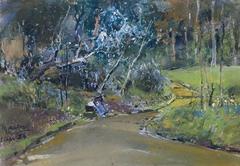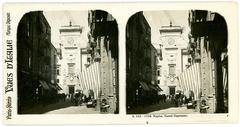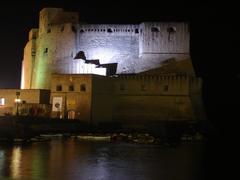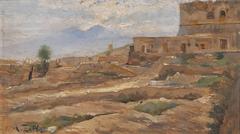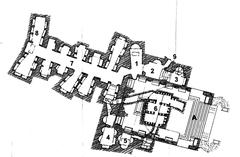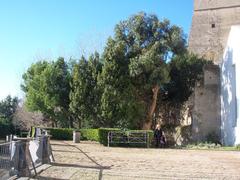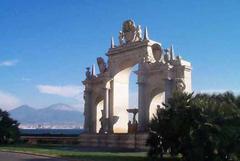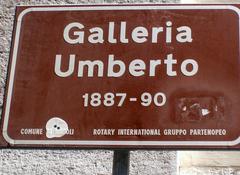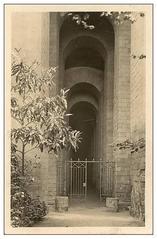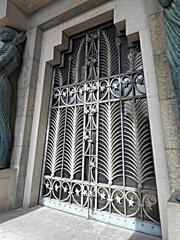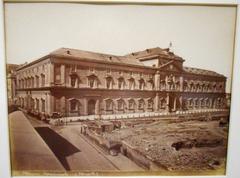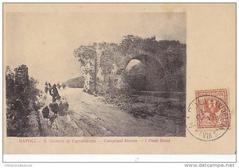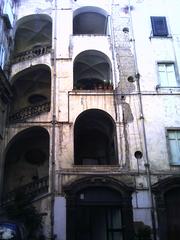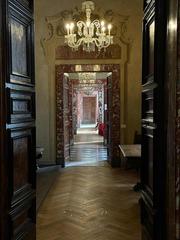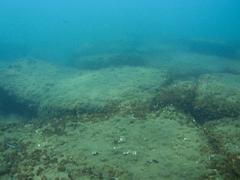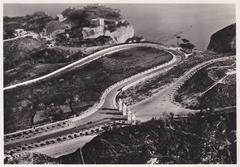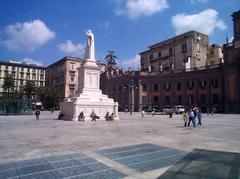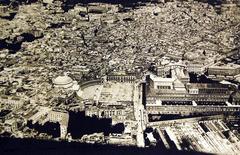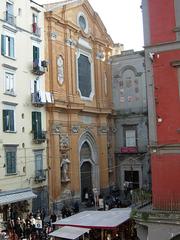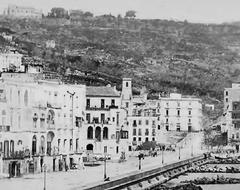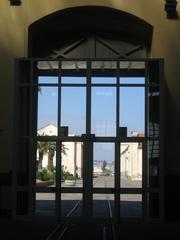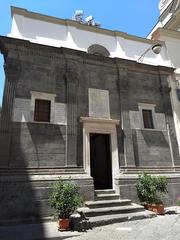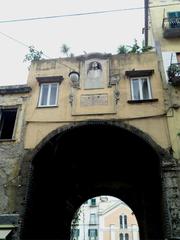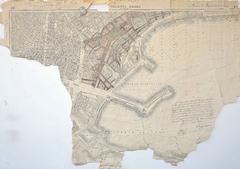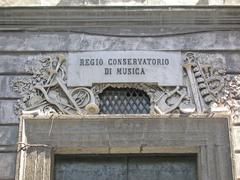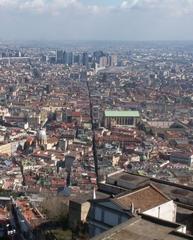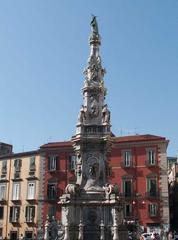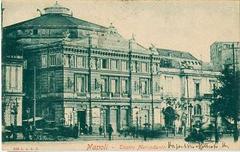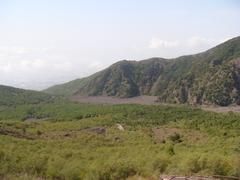
Carmine Castle Visiting Hours, Tickets, and History Guide – Naples, Italy
Date: 04/07/2025
Introduction
Carmine Castle (Castello del Carmine) stands as one of Naples’ most evocative historical landmarks, offering a window into the city’s medieval origins and its evolution through centuries of military, political, and cultural change. Commissioned in 1382 by Charles III of Durazzo, the castle was a crucial element of Naples’ eastern defenses, witnessing the rule of Angevin, Aragonese, and Spanish dynasties (JustNapoli; Santa Chiara Hotel). Though much of the fortress was demolished in 1900 to make way for urban expansion, key elements such as the Torre Spinella and segments of the Aragonese walls endure in the bustling Mercato district, offering visitors a tangible link to Naples’ fortified heritage (Wikipedia; TravelTriangle).
Beyond its architectural significance, Carmine Castle is interwoven with the city’s identity, most notably through the annual Festa della Madonna del Carmine, a vibrant July festival that draws locals and visitors alike (Napleswise; VisitItaly). Today, while the interior is no longer accessible, the castle’s remains are freely viewable as open-air monuments, inviting exploration and reflection on Naples’ layered past (life-globe.com; Audiala).
This guide delivers detailed historical context, practical advice for visiting, accessibility information, travel tips, and insight into the castle’s enduring cultural role.
Contents
- Introduction
- Historical Overview
- Origins and Construction
- Evolution Through Dynasties
- Major Historical Events
- Demolition and Urban Renewal
- Visitor Information
- Visiting Hours and Access
- Tickets and Accessibility
- Travel Tips
- Architectural Features and Surviving Elements
- Cultural and Symbolic Significance
- Timeline of Key Events
- Legacy and Modern Context
- Visuals and Further Resources
- Related Articles
- FAQ
- Call to Action
- Sources
Historical Overview
Origins and Construction
Carmine Castle was commissioned by Charles III of Durazzo in 1382, at a time when Naples required robust defenses against both landward and seaborne threats (JustNapoli; Santa Chiara Hotel). Situated at the city’s southeastern corner, the fortress was strategically positioned to guard vital approaches. Unlike more ornate Italian castles, Carmine Castle featured a utilitarian design—two strong towers (including the famed Torre Spinella), thick walls, and minimal decorative elements—emphasizing its defensive function (TravelTriangle).
Evolution Through Dynasties
Angevin and Aragonese Periods
Initially serving the Angevin rulers, the castle’s defensive role was reinforced and expanded under the Aragonese dynasty in the 15th century. The Aragonese recognized the need for updated fortifications in the face of changing military technology and built thicker walls and additional bastions (Time Travel Turtle).
Spanish Viceroyalty and Renovations
During the 16th century, under the Spanish viceroys, Carmine Castle was integrated into a new system of city defenses. Major renovations included artillery bastions and further strengthening of its existing structures (Wikipedia).
Major Historical Events
The Neapolitan Republic of 1799
Carmine Castle played a significant role during the Neapolitan Republic, serving as a stronghold for republican forces (Santa Chiara Hotel). Its strategic position made it a focal point during the city’s defense against royalist reconquest.
Decline and Repurposing
By the 19th century, advances in military technology made Carmine Castle obsolete. The Bourbon rulers repurposed parts of the castle as barracks, and its importance declined (Santa Chiara Hotel).
Demolition and Urban Renewal
In 1900, much of Carmine Castle was demolished to accommodate Via Marina, a major coastal road, as part of Naples’ modernization (Wikipedia; TravelTriangle). Only the Torre Spinella, Torre del Carmine, and portions of the Aragonese walls survive, now integrated into the urban fabric of the Mercato district (Classica Amalfi Coast).
Visitor Information
Visiting Hours and Access
- Exterior Remains: The surviving towers and walls are open-air monuments accessible at any time, with no formal opening hours or entry restrictions.
- Interior Access: The towers are not open for public entry due to safety and preservation concerns (life-globe.com).
Tickets and Accessibility
- Tickets: No ticket or entrance fee is required to view the castle’s exterior remains.
- Guided Tours: Several Naples walking tours include stops at Carmine Castle’s remains. Check with local tourism offices or online platforms for upcoming tours (Audiala).
- Accessibility: The area is accessible by public transport and on foot. Pavements may be uneven, so plan accordingly if you have mobility challenges.
Travel Tips
- Best Time to Visit: Daytime is recommended for safety and optimal photography.
- Getting There: The site is near Piazza del Carmine and well connected by bus, tram, and metro.
- Nearby Attractions: Explore the Church of Santa Maria del Carmine Maggiore, the Naples Historic Center (UNESCO-listed), Castel Nuovo, and the lively Mercato market.
- Safety: The area is generally safe during the day; exercise standard urban caution near busy roads.
Architectural Features and Surviving Elements
The Torre Spinella and Torre del Carmine are the principal surviving elements:
- Torre Spinella: Located on Via Marina, this cylindrical tower features robust stonework and medieval defensive characteristics.
- Torre del Carmine: Close to the Church of Santa Maria del Carmine Maggiore, partially embedded in newer buildings.
- Fragmentary Ruins: Remnants of the Aragonese curtain wall and traces of defensive ditches can be seen integrated into the urban landscape (life-globe.com).
Cultural and Symbolic Significance
Carmine Castle’s importance extends beyond its stonework. The site is central to the annual Festa della Madonna del Carmine (July 15–16), where fireworks and light displays around the castle’s bell tower commemorate centuries-old traditions (Napleswise; VisitItaly). The castle serves as a backdrop for public gatherings, markets, and demonstrations, underscoring its role as a living monument and anchor of local identity.
Timeline of Key Events
- 1382: Construction by Charles III of Durazzo (JustNapoli)
- 15th–16th centuries: Expanded under Aragonese and Spanish rule (Wikipedia)
- 1799: Defended during the Neapolitan Republic (Santa Chiara Hotel)
- 19th century: Decline and conversion to barracks
- 1900: Major demolition for Via Marina (Wikipedia)
- Present: Surviving towers and walls function as public monuments (TravelTriangle)
Legacy and Modern Context
Though only fragments remain, Carmine Castle continues to embody Naples’ enduring spirit. Its ruins are a testament to the city’s resilience and adaptability, while ongoing community events and urban regeneration projects keep the site relevant in contemporary Naples (Napoli Domus).
Visuals and Further Resources
- Photographic Opportunities: The contrast between medieval towers and modern cityscape is striking, especially at golden hour.
- Alt Text Suggestions: “Carmine Castle Torre Spinella Naples,” “Remains of Carmine Castle near Piazza del Carmine”
- Maps and Virtual Tours: Available on tourism platforms and city guides (life-globe.com).
Related Articles
- Castel Nuovo: The Iconic Medieval Fortress
- Historic Center of Naples: A UNESCO World Heritage Site
- Guide to Naples’ Castles and Fortifications
Frequently Asked Questions (FAQ)
Q: Are the Carmine Castle towers open to the public?
A: No, interior access is not permitted, but the towers and walls can be viewed from the street.
Q: Is there an entrance fee?
A: No, viewing the exterior remains is free.
Q: Are guided tours available?
A: Yes, local walking tours often include the castle; check with tourism offices for schedules.
Q: What are the visiting hours?
A: The site is accessible at all times; daytime visits are best.
Q: Is the site wheelchair accessible?
A: The area is accessible, but surfaces may be uneven.
Call to Action
Plan your exploration of Naples’ historic treasures! For updated itineraries, travel tips, and interactive content, download the Audiala app and follow us on social media. Discover the hidden stories and vibrant traditions that make Carmine Castle a must-see destination.
Summary & Travel Tips
Carmine Castle is a powerful symbol of Naples’ complex history, from medieval fortification to contemporary cultural landmark. Despite the loss of much of its original structure, the surviving towers and walls offer free, accessible insight into the city’s defensive past. The castle remains a focal point for local celebrations and urban identity, situated within easy reach of other major attractions (JustNapoli; Wikipedia; TravelTriangle; life-globe.com). Whether you’re a history enthusiast or a casual traveler, Carmine Castle is an essential part of any Naples itinerary.
Sources
- JustNapoli
- Santa Chiara Hotel
- TravelTriangle
- Wikipedia
- life-globe.com
- tripindicator.com
- Napleswise
- VisitItaly
- Audiala
- Classica Amalfi Coast
- Napoli Domus
- Time Travel Turtle

